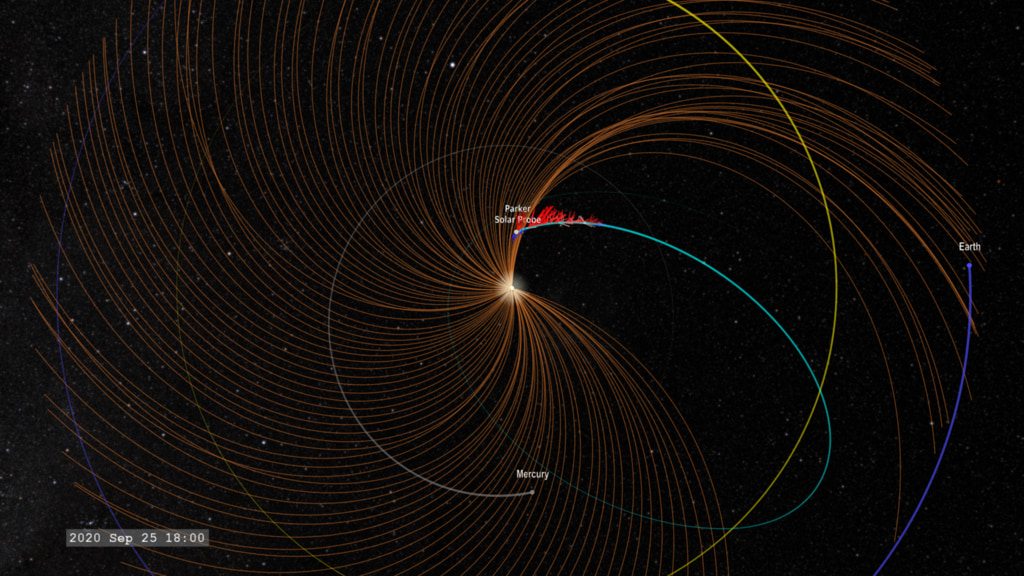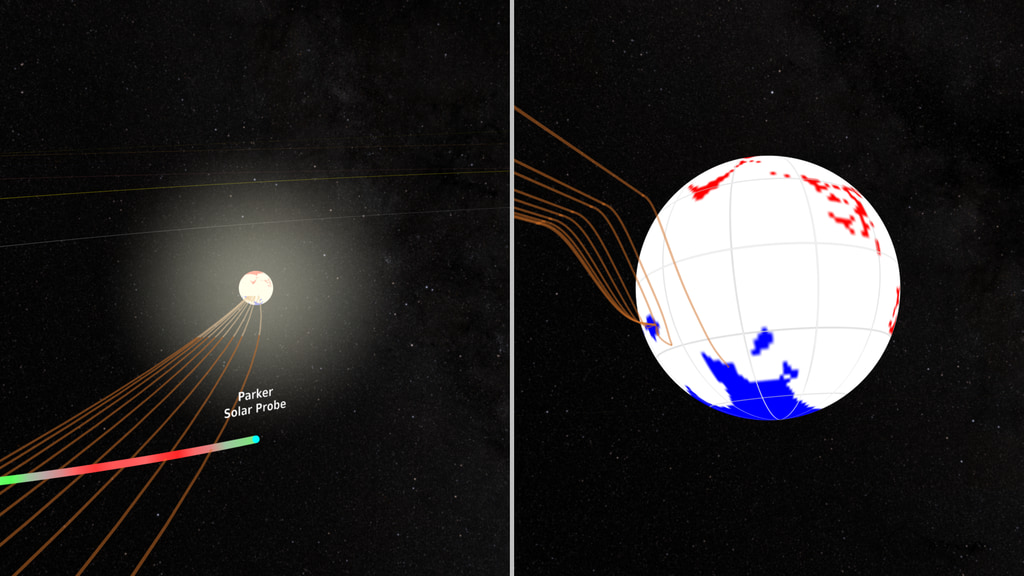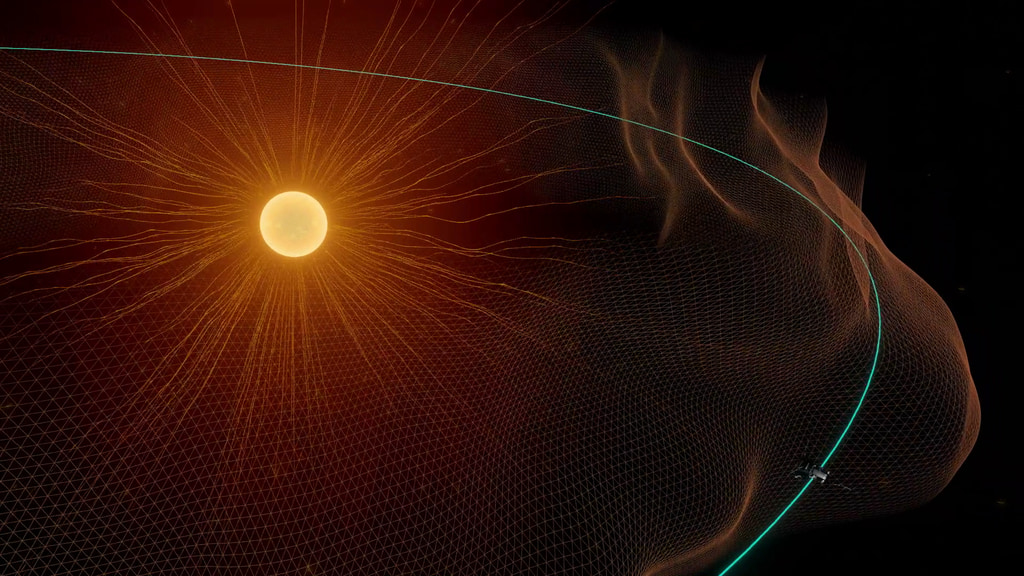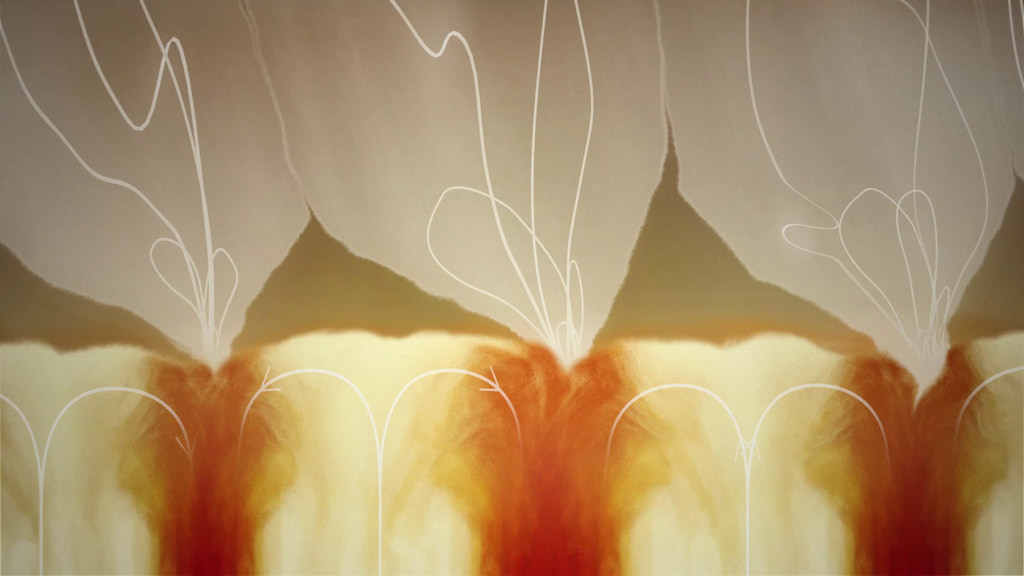AGU 2021 - Major discoveries as NASA’s Parker Solar Probe closes in on the Sun
NASA’s Parker Solar Probe has now done what no spacecraft has done before—it has officially touched the Sun. Launched in 2018 to study the Sun’s biggest mysteries, the spacecraft has now grazed the edge of the solar atmosphere and gathered new close-up observations of our star. This is allowing us to see the Sun as never before—including the findings in two new papers, which were presented at AGU, that are helping scientists answer fundamental questions about the Sun.
PANELISTS
Dr. Nicola Fox
• Heliophysics Division Director of the Science Mission Directorate at NASA Headquarters
Dr. Nour Raouafi
• Project Scientist for NASA’s Parker Solar Probe
• The Johns Hopkins Applied Physics Laboratory
Dr. Justin Kasper
• Principal Investigator for Solar Wind Electrons Alphas and Protons (SWEAP) Investigation on Parker Solar Probe
• BWX Technologies, Inc., University of Michigan
Prof. Stuart D. Bale
• Principal Investigator for Fields Experiment (FIELDS) on Parker Solar Probe
• University of California, Berkeley
Dr. Kelly Korreck
• Program Scientist at NASA Headquarters
• Smithsonian Astrophysical Observatory
Parker Solar Probe has now “touched the Sun”, passing through the Sun’s outer atmosphere, the corona for the first time in April 2021.
Credit: NASA GSFC/CIL/Brian Monroe
Parker Solar Probe has now “touched the Sun”, passing through the Sun’s outer atmosphere, the corona for the first time in April 2021.
Credit: NASA/Johns Hopkins APL/Ben Smith
Parker Solar Probe has now “touched the Sun”, passing through the Sun’s outer atmosphere, the corona for the first time in April 2021. The boundary that marks the edge of the corona is the Alfvén critical surface. Inside that surface, plasma is connected to the Sun by waves that travel back and forth to the surface. Beyond it, the Sun’s magnetic fields and gravity are too weak to contain the plasma and it becomes the solar wind, racing across the solar system so fast that waves within the wind cannot ever travel fast enough to make it back to the Sun.
Credit: NASA/Johns Hopkins APL/Ben Smith
The Alfvén critical surface marks the end of the solar atmosphere and beginning of the solar wind. Solar material with the energy to make it across that boundary (circle at right) becomes the solar wind, which drags the magnetic field of the Sun with it as it races across the solar system, to Earth and beyond. Beyond the Alfvén critical surface, the solar wind moves so fast that waves within the wind cannot ever travel fast enough to make it back to the Sun – severing their connection. Plasma within the corona (circle at left), is still connected to the Sun and waves in the plasma travel back and forth between the surface and upper corona.
Credit: NASA GSFC/Johns Hopkins APL/Ben Smith

As Parker Solar Probe passed through the corona on encounter nine, the spacecraft flew by structures called coronal streamers. These structures can be seen as bright features moving upward in the upper images and angled downward in the lower row. Such a view is only possible because the spacecraft flew above and below the streamers inside the corona. Until now, streamers have only been seen from afar. They are visible from Earth during total solar eclipses.
Credit: NASA/Johns Hopkins APL/Naval Research Laboratory
During Parker Solar Probe’s eighth orbit around the Sun, the spacecraft flew through structures in the corona called streamers.
This movie shows that data from the WISPR instrument on Parker Solar Probe.
Credit: NASA/Johns Hopkins APL/Naval Research Laboratory
During encounters 8 and 9, Parker Solar Probe flew through structures in the corona called streamers.
This movie shows that data from the WISPR instrument on Parker Solar Probe.
Credit: NASA/Johns Hopkins APL/Naval Research Laboratory
This model maps out a feature called a pseudostreamer that Parker Solar Probe flew through on its eighth encounter. To create the visualization, researchers used magnetic models to trace back particles in the solar wind measured by Parker to their origins on the solar surface. The colors show the speed of the particles compared to the speed of Alfvén waves, the fastest waves in the corona, with green being the particles flowing faster than Alfvén waves and purple slower.
Credit: David Stansby

A view of the Aug. 21, 2017, total solar eclipse from Madras, Oregon. On Parker Solar Probe’s eighth and ninth flybys, it passed through structures called coronal streamers. These features can be seen from Earth during total solar eclipses, such as in this image where they appear as bright streaks leading away from the Sun.
Credit: NASA/Nat Gopalswamy
Observed near Earth, the solar wind is a relatively uniform flow of plasma, with occasional turbulent tumbles. By that point it’s traveled over ninety million miles — and the signatures of the Sun's exact mechanisms for heating and accelerating the solar wind are wiped out. Closer to the solar wind's source, Parker Solar Probe is seeing a much different picture: a complicated, active system. These close-up views are helping scientists understand how the solar wind is accelerated to extreme speeds.
Credit: NASA GSFC/CIL/Adriana Manrique Gutierrez

As Parker Solar Probe ventures closer to the Sun, it’s crossing into uncharted regimes and making new discoveries. This image represents Parker Solar Probe's distances from the Sun for some of these milestones and discoveries.
Credit: NASA GSFC/Mary P. Hrybyk-Keith
Parker data found that the solar magnetic field embedded in the solar wind flips in the direction. These reversals — dubbed "switchbacks" — last anywhere from a few seconds to several minutes as they flow over Parker Solar Probe. During a switchback, the magnetic field whips back on itself until it is pointed almost directly back at the Sun.
Credit: NASA GSFC/CIL/Adriana Manrique Gutierrez
Parker Solar Probe has flown through several ‘switchbacks’ – tubes of fast solar wind emerging from coronal holes in the Sun’s upper atmosphere.
Credit: NASA GSFC/CIL/Adriana Manrique Gutierrez
Data from Parker Solar Probe has traced the origin of switchbacks – magnetic zig-zag structures in the solar wind – back to the solar surface. At the surface, magnetic funnels emerge from the photosphere between convection cell structures called supergranules. Switchbacks form inside the funnels and rise into the corona and are pushed out on the solar wind.
Credit: NASA GSFC/CIL/Jonathan North
Flying through several ‘switchbacks’ – magnetic zig-zag structures in the solar wind – close to the Sun, Parker Solar Probe gathered data allowing it to determine the switchbacks’ origins.
Credit: NASA Goddard/CIL/Jonathan North
Flying through several ‘switchbacks’ – magnetic zig-zag structures in the solar wind – close to the Sun, Parker Solar Probe gathered data allowing it to determine the switchbacks’ origins.
Credit: NASA Goddard/CIL/Jonathan North

NASA has a fleet of spacecraft strategically placed throughout our heliosphere -- from Parker Solar Probe at the Sun observing the very start of the solar wind, to satellites around Earth, to the farthest human-made object, Voyager, which is sending back observations on interstellar space. Each mission is positioned at a critical, well-thought out vantage point to observe and understand the flow of energy and particles throughout the solar system — all helping us untangle the effects of the star we live with.
Credit: NASA GSFC/Jenny Mottar

When flying past Venus in July 2020, Parker Solar Probe’s WISPR instrument, short for Wide-field Imager for Parker Solar Probe, detected a bright rim around the edge of the planet that may be nightglow — light emitted by oxygen atoms high in the atmosphere that recombine into molecules in the nightside. The prominent dark feature in the center of the image is Aphrodite Terra, the largest highland region on the Venusian surface. Bright streaks in WISPR, such as the ones seen here, are typically caused by a combination of charged particles — called cosmic rays — sunlight reflected by grains of space dust, and particles of material expelled from the spacecraft’s structures after impact with those dust grains. The number of streaks varies along the orbit or when the spacecraft is traveling at different speeds, and scientists are still in discussion about the specific origins of the streaks here. The dark spot appearing on the lower portion of Venus is an artifact from the WISPR instrument.
Credit: NASA/Johns Hopkins APL/Naval Research Laboratory/Guillermo Stenborg and Brendan Gallagher
Parker Solar Probe’s eighth flyby of the Sun started on April 24, 2021 at 23.2 million miles from the Sun. It reached perihelion on April 29, 2021 at 6.5 million miles from the Sun.
Credit: NASA/Johns Hopkins APL/Steve Gribben
One month after a flyby with Venus on October 16, 2021, Parker Solar Probe began its tenth solar encounter at 22.8 million miles from the Sun. On November 21, 2021 it reached perihelion for that encounter, putting it at just 5.3 million miles from the Sun.
Credit: NASA/Johns Hopkins APL/Steve Gribben
Parker Solar Probe has now “touched the Sun”, passing through the Sun’s outer atmosphere, the corona for the first time in April 2021. This historic closest approach to the Sun is allowing Parker to gather data that’s helping scientists unravel some of the biggest questions about our star and its influence on the solar system.
Credit: NASA/Johns Hopkins APL

This conceptual image shows Parker Solar Probe about to enter the solar corona.
Credit: NASA/Johns Hopkins APL/Ben Smith
For More Information
Credits
Please give credit for this item to:
NASA's Goddard Space Flight Center
-
Scientists
- Nicola Fox (NASA)
- Nour Raouafi (Johns Hopkins University/APL)
- Justin Kasper (University of Michigan)
- Stuart Bale (University of California, Berkeley)
- Kelly Korreck (Johns Hopkins University/APL)
-
Producers
- Joy Ng (KBR Wyle Services, LLC)
- Mara Johnson-Groh (Wyle Information Systems)
Release date
This page was originally published on Tuesday, December 14, 2021.
This page was last updated on Wednesday, May 3, 2023 at 1:43 PM EDT.





